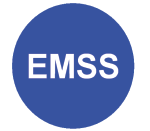Creating the future airport passenger experience: IMHOTEP
- a Amsterdam University of Applied Sciences – Aviation Academy, Weesperzijde 190, Amsterdam, 1097 DZ, The Netherlands
- b Amsterdam University of Applied Sciences – Amsterdam School of International Business, Fraijlemaborg 133, Amsterdam, 1102 CV, The Netherlands
- c Nommon Solutions and Technologies SL, Calle C. Coello 124, Madrid, 28006, Spain
- d Technical University of Dresden – Institute of Logistics and Aviation, Helmholtzstrasse 10, Dresden, 01069, Germany
- e Cranfield University – Centre for Air Transport Management, College road, Cranfield, MK43 0AL, United Kingdom
Cite as
Mujica Mota M., Scala P., Herranz R., Schultz M., Jimenez E. (2020). Creating the future airport passenger experience: IMHOTEP. Proceedings of the 32nd European Modeling & Simulation Symposium (EMSS 2020), pp. 171-178.
DOI: https://doi.org/10.46354/i3m.2020.emss.024
Abstract
As the airport of the future is expected to become a multimodal connection platform, one of the main challenges is to create the conditions for travelers to reach their destination by the most efficient and sustainable combination
of modes. This will, furthermore, allow the airport and its surrounding region to make a better use of their resources. In this context, the H2020-SESAR-2019-2 funded project IMHOTEP, aims at developing a concept of operations
and a set of data analysis methods, predictive models and decision support tools that allow information sharing, common situational awareness and real-time collaborative decision-making between airports and ground transport
stakeholders. In this paper, the IMHOTEP concepts are presented. The focus is on the project proposed objectives and methodologies applied. Finally, the project expected results and limitations will be discussed.
References
- Aimsun, 2020. Aimsun Live. https://www.aimsun.com/aimsun-live/
- Alodhaibi, S., Burdett, R. L., & Yarlagadda, P. K. (2017). Framework for airport outbound passenger flow modelling. Procedia Engineering, 174, 1100-1109.
- ARC, 2020. CAST. https://arc.de/cast-simulationsoftware/
- EUROCONTROL, 2016. A-CDM Impact Assessment – Final Report.
- European Commission, 2011. White Paper: Roadmap to a Single European Transport Area – Towards a competitive and resource efficient transport system. COM(2011) 144 final.
- Ma, W., Kleinschmidt, T., Fookes, C., & Yarlagadda, P. K. (2011). Check-in processing: simulation of passengers with advanced traits. In Proceedings of the Winter Simulation Conference (pp. 1783-1794): Winter
Simulation Conference.
- Rauch, R., & Kljajić, M. (2006). Discrete event passenger flow simulation model for an airport
terminal capacity analysis. Organizacija, 39(10). - Schultz, M., & Fricke, H. (2011). Managing Passenger Handling at Airport Terminal Individual-based Model for Stochastic Passenger Behavior. 9th USA/Europe Air Traffic Management Research and Development
Seminar, Berlin, Germany.
- SESAR, 2019. Total Airport Management. https://www.sesarju.eu/projects/tam
